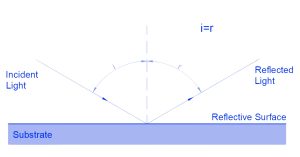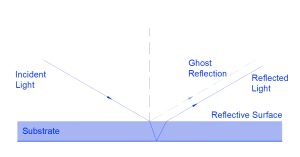In this article, we will delve into the specifics of metallic mirror coatings, focusing on Anti-Reflective (AR) coatings and metal film coatings. These coatings play a crucial role in enhancing the reflective properties of substrates like glass or plastic, effectively turning them into functional mirrors.
AR coatings, thin films applied to optical materials, aim to reduce light reflection, thereby improving transmittance and visibility. By leveraging the interference effect of light through layered thin films, AR coatings minimize reflections, enhancing the clarity of transparent materials.
AR coatings find application in various products such as eyeglasses, camera lenses, LCD displays, solar panels, and lighting fixtures, mitigating unpleasant reflections and ensuring clear vision.
Metal film coating for mirrors involves applying a thin metal film onto a substrate, significantly enhancing its reflective properties to function as a mirror.
Utilizing electronic vibrations, the metallic film absorbs and reflects specific wavelengths of light, thus improving the reflective capabilities of the substrate. By selectively reflecting light, the metallic layer creates mirrors with superior reflective properties.
Metal film coatings are widely used in household and commercial mirrors, car rearview mirrors, telescopes, and optical instruments. The ability to adjust the thickness and composition of the metallic film allows for customization of mirrors with high reflective properties in specific wavelength bands.
Front and rear mirrors serve distinct roles in optical equipment and automotive applications, each with unique characteristics and functionalities.
Front Mirror
Rear Mirror
Front and rear mirrors fulfill distinct purposes due to their differences in reflective positions, visibility mechanisms, and coatings. Understanding these disparities is crucial for their appropriate application in various contexts.


Various metals are employed in coatings, each with distinct properties and applications:
Metallic mirror coatings, including AR coatings and metal film coatings, are essential in various industries for improving visibility, enhancing reflective properties, and enabling precise optical applications. Understanding the characteristics and applications of different metallic coatings facilitates their effective utilization in diverse fields.
Do not hesitate to contact Shanghai Optics today. We’d be more than happy to discuss your projects and how best they can become a success.